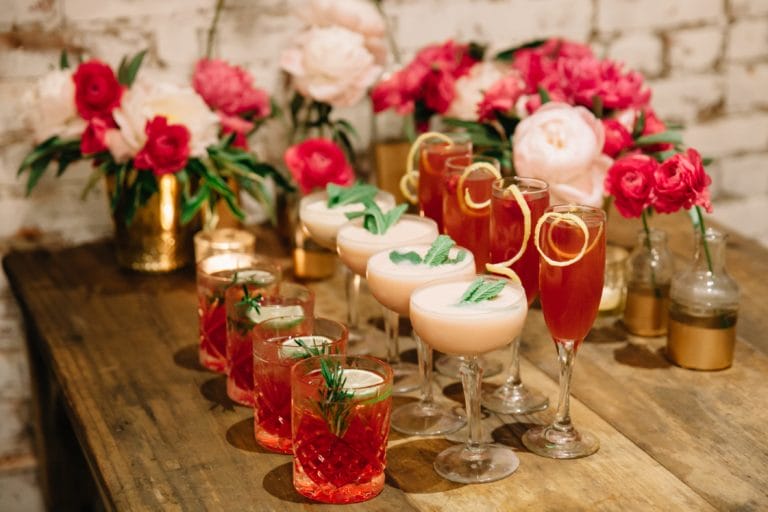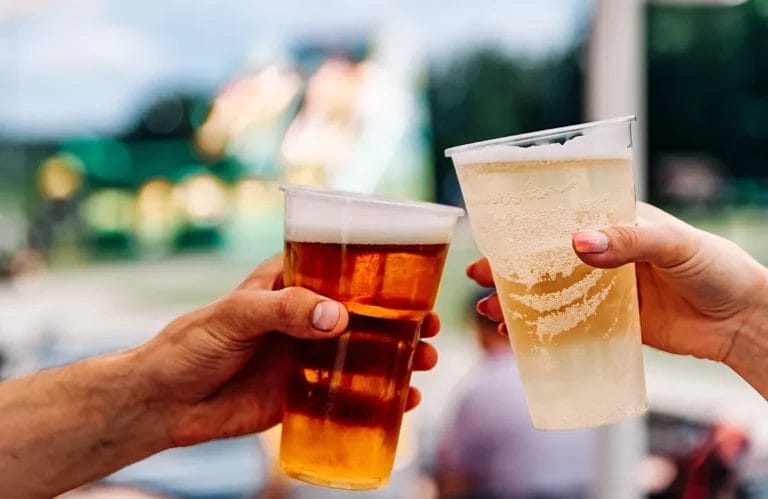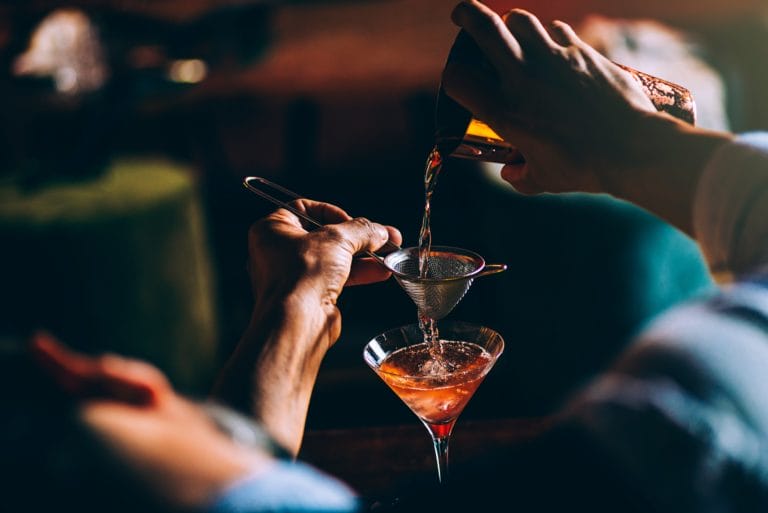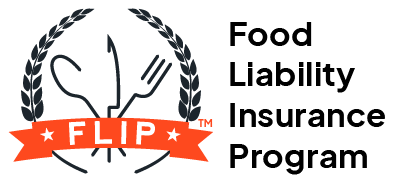Last Updated: 3/19/2025
It’s a warm summer night and you’re serving drinks at an elegant wedding reception. The night takes a turn for the worse when an intoxicated groomsman drives home and gets into a car accident with another vehicle.
The other driver is seriously injured, suffering multiple broken bones and a head injury. Suddenly, you’re liable for the injured driver’s medical expenses and other damages, costing you thousands of dollars out of pocket. All because you were providing the alcohol.
This is just one example of a claim you could face. Let’s look at four liquor liability claim examples from Food Liability Insurance Program (FLIP) policyholders, how to prevent them, and how to protect your business with liquor liability insurance.

Examples of Liquor Liability Claims
Liquor liability claims range from minor property damage to death. Even the least expensive ones can still cost tens of thousands of dollars.
Each of the bartenders and businesses in the four examples below have one thing in common: they had liquor liability insurance. As you read them and learn tips for mitigating these risks, remember that the only way to fully protect yourself from the financial impact of a claim is by being insured.
Claim #1: A Night of Drinking Turns Deadly
A policyholder worked her bartending shift in New Mexico at a local bar. It was business as usual as she served beer and shots to a rowdy crowd.
What Went Wrong
Two customers became increasingly aggressive, arguing several times before friends could separate them.
Hours later, the pair fought again. One of them drew a gun and fired several times, hitting his victim in the chest and grazing a bystander. In the end, one man was dead, another severely injured, and the assailant in custody.
The bartender in question served the perpetrator multiple drinks over several hours. His blood alcohol was 0.24 — three times the state’s legal limit.
The Outcome
The victim’s family sued the bar and the bartender for the wrongful death of their loved one, claiming they overserved the assailant at the time of the shooting.
Liquor Liability Insurance Payout: $40,878
How to Prevent This
Studies show there are over 7,000 alcohol-related homicides every year and that alcohol is the most common intoxicant of choice for offenders.
While you can’t control your customers’ mental states or reactions, you can take precautions to avoid adding fuel to the fire:
- Take an alcohol safety course, such as Training for Intervention ProcedureS (TIPs), and require employees to take it
- Only operate at events and locations with security measures (e.g., bag checks or metal detectors)
- Pay attention to your customers’ behaviors and learn the signs of intoxication

Claim #2: An Intoxicated Driver Injures a Pedestrian
An Alabama business held a networking event at a local rental hall. The catering company provided hors d’oeuvres, a buffet, and full bar service.
What Went Wrong
While the event was winding down, a guest was walking to her car. As she crossed the lot, another guest pulled out of their parking space and sped forward without looking, hitting the pedestrian while driving 20 MPH. The victim escaped with some scrapes and a small fracture.
Unfortunately, investigating officers found the driver was intoxicated after consuming six beers over the two hours he attended the event. He claimed he stopped drinking and drank coffee half an hour before he got behind the wheel and felt fine to drive.
The Outcome
The driver was charged with Operating a Vehicle Impaired (OVI). The pedestrian sought compensation from the catering company that served the drinks for her injuries and emotional distress.
Liquor Liability Insurance Payout: $21,411
How to Prevent This
The liver can only metabolize one drink per hour, and no amount of cold showers, fresh air, or coffee speeds that up.
Monitoring how many drinks you serve customers and limiting them to one per hour can prevent them from becoming dangerously intoxicated.
While you should watch for inebriation, people won’t always display the telltale signs. Observe and evaluate customers for other key factors that can influence a person’s reaction to alcohol before serving them, including:
- Weight: Those with a lower weight or higher body fat have less tolerance to alcohol.
- Age: Older people tend to metabolize alcohol more slowly.
- Water and food: If a customer isn’t eating or drinking water, their body absorbs alcohol faster.
- Emotional state: Alcohol exaggerates one’s emotional state, including agitation, fatigue, and depression.
- What they’re drinking: Drinks with higher alcohol content have a stronger intoxicating impact. Carbonation, like in sodas and Champagne, can also speed up absorption.
Part of your role in serving alcohol is to observe these factors and determine if you can safely serve the customer.

Claim #3: Drunk Driving Results in a Million-Dollar Payment
A FLIP policyholder in California worked the reception for a baptism. The child’s family hired them to tend the bar while guests mingled post-ceremony.
What Went Wrong
The child’s uncle made frequent trips to the bar during the reception. The bartender continued to serve him, not realizing how intoxicated he had become, losing track of how often he visited the bar.
Afterward, the uncle attempted to drive himself home. He veered into the opposite lane around a turn in the road and crashed into an oncoming vehicle.
The driver of the other vehicle was rushed to the hospital after sustaining multiple fractures, lacerations, and a concussion. They missed weeks of work due to hospitalizations and surgeries.
The Outcome
The driver sued the bartender, claiming they overserved the uncle and were responsible for him driving under the influence. They sought compensation for medical bills and lost wages because they couldn’t work while they recovered.
Liquor Liability Insurance Payout: $1,010,000
How to Prevent This
It may be hard to convince intoxicated guests not to drive themselves home, especially when they aren’t prepared with a backup plan.
Don’t count on other guests to look out for potential drunk drivers and make sure they get home safely. Instead, this must be part of your role as a responsible server.
In addition to avoiding overserving, prevent patrons from driving under the influence with these strategies:
- Discreetly ask guests how they plan to get home to see if they are at risk of getting behind the wheel
- Encourage groups of guests to have a designated driver (DD) by offering free non-alcoholic beverages or snacks to DDs
- Place a sign with the numbers of local taxis on your bar
- Offer to arrange an Uber, Lyft, or other rideshare service on behalf of guests
Claim #4: A Drunken St. Paddy’s Day Brawl
On St. Patrick’s Day, an Indiana bartender served drinks as fast as she could make them — the place was packed.
What Went Wrong
One customer had been belly up to the bar since opening, becoming increasingly loud and aggressive with other customers. Security escorted him off the premises after he smashed his glass on the ground.
The customer struggled with the doorman while being led out, requiring a forceful removal. Security pushed him through the door, causing him to bang his head on the sidewalk, resulting in a head wound.
The Outcome
What seemed like a minor injury turned out to be a severe concussion, and the customer experienced memory loss, headaches, and fatigue. Because this impacted his ability to work, he sued the bar, the doorman, and the bartender.
Liquor Liability Insurance Payout: $443,137
How to Prevent This
Nobody wants to ruin a celebration by refusing service, but sometimes you must. Most states have laws against serving an intoxicated person.
Do not serve a customer who shows common signs of intoxication, such as:
- Slurred speech
- Aggression
- Loss of balance or stumbling
- Red, watery eyes
- Speaking loudly
- Flushed face
The customer was clearly inebriated, and his behavior worsened over time. If he had been cut off sooner, it’s unlikely that security would have needed to remove him.

How Insurance Protects You Against Liquor Liability Claims
There are many ways to mitigate liquor legal liability risks, but here’s the reality: accidents still happen. If you get hit with a claim, liquor liability insurance is the best way to protect your business and finances.
In the examples above, liquor liability helped cover expenses those bartenders were held liable for, including:
- Medical bills
- Attorney’s fees
- Settlement costs
- Repairs to property
Without insurance, these bartenders would be left to pay thousands or millions of dollars out of pocket. That’s what makes bartender liquor liability insurance essential: it shielded them from this fate, and it can do the same for you.
Get Your Free Liquor Liability Insurance Quote Today
Get affordable bartender insurance from Food Liability Insurance Program (FLIP), which includes both general and liquor liability coverage, starting at $37.75 a month or $453 a year.
If you only need short-term coverage for a specific occasion, such as serving alcohol at a wedding, get a three-day policy starting at $100.
As the above liquor liability claims examples show, things can (and do) go very wrong, very quickly when alcohol is in the mix. When prevention fails, the right insurance helps protect you from the fallout and safeguards your business.
FAQs About Liquor Liability Claims and Insurance
Does Liquor Liability Insurance Cover Bar Fights?
FLIP’s liquor liability insurance can cover assault and battery claims if you add this coverage to your policy for $106 per year. A base liquor liability policy will not cover assault and battery claims.
The limit for this coverage is $25,000.
Can I Be Held Liable If I Didn’t Directly Serve Alcohol to the Person Involved in the Incident?
Yes — there are situations where you could be held liable for an intoxicated person’s actions, even if you didn’t directly provide them with alcohol, based on your state’s dram shop laws.
For example, if you run a catering company and your bartender overserves a guest who drives home intoxicated, you could be held liable alongside the bartender for any damages due to your negligence.
Can a Liquor Liability Claim Be Filed Even If No One Was Injured?
Yes — third-party bodily injury is only one reason someone might file a liquor liability claim. Other reasons include:
- An intoxicated guest damaged someone’s property
- A bartender served alcohol to a minor
- A bartender overserved alcohol to a guest
How Long Does a Liquor Liability Claim Typically Take to Resolve?
If you file a claim with FLIP, a claims adjustor will take 7–10 days to process your form and contact you to help you complete the process.
However, it can take between 1–3 years to fully resolve a liquor liability claim, depending on a few factors:
- How many parties are involved in the claim
- The severity of the damages or injuries
- Whether the state the incident occurred in has dram shop laws (can speed up or slow down the case)
How Much Is Bartender Insurance Monthly?
Bartender insurance from FLIP costs $37.75 per month. If you don’t want to pay by the month, you can also pay $453 upfront for the year.

Alex Hastings
Seattle-based copywriter and (WA) licensed insurance agent Alex Hastings leverages her experience as a lover of fast-casual food, baked goods, and iced oat milk lattes. She holds a B.A. in Creative Writing from Western Washington University. Before working at Veracity, she was a retail copywriter at Zulily and an English language teacher in South Korea. Alex is fully trained on FLIP insurance coverages and writes content that connects food and beverage business owners with the policies they need.
Seattle-based copywriter and (WA) licensed insurance agent Alex Hastings leverages her experience as a lover of fast-casual food, baked goods, and iced oat milk lattes. She holds a B.A. in Creative Writing from Western Washington University. Before working at Veracity, she was a retail copywriter at Zulily and an English language teacher in South Korea. Alex is fully trained on FLIP insurance coverages and writes content that connects food and beverage business owners with the policies they need.

Kyle Jude
Kyle Jude is the Program Manager for Food Liability Insurance Program (FLIP). As a dedicated program manager with 10+ years of experience in the insurance industry, Kyle offers insight into different coverages for food and beverage business professionals who are looking to navigate business liability insurance.
Kyle Jude is the Program Manager for Food Liability Insurance Program (FLIP). As a dedicated program manager with 10+ years of experience in the insurance industry, Kyle offers insight into different coverages for food and beverage business professionals who are looking to navigate business liability insurance.

